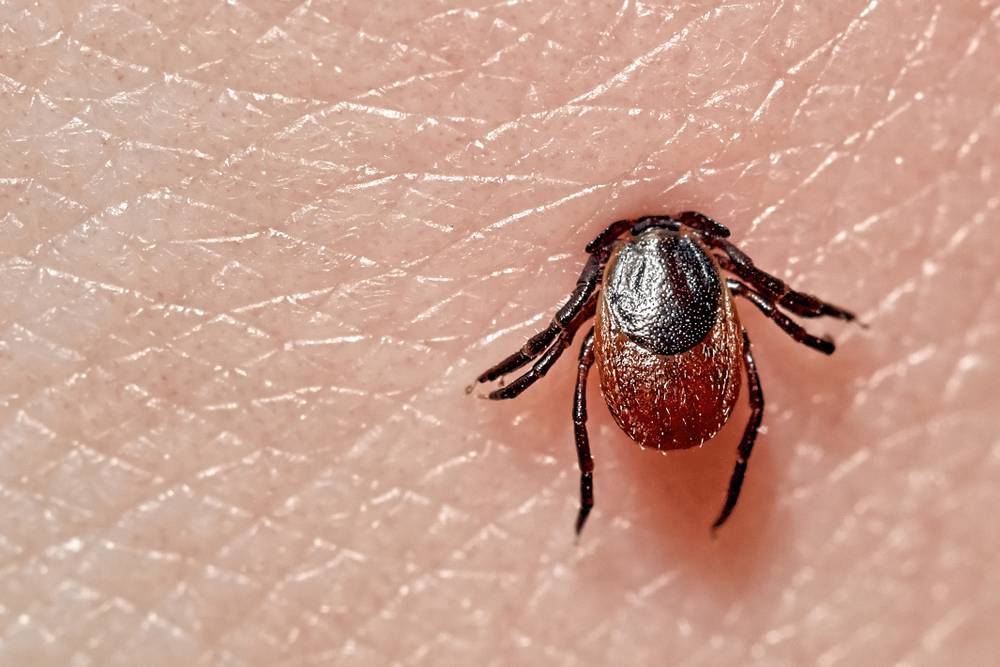The prevalence of Lyme disease in Asia, a region where this tick-borne illness was previously less common, is now being increasingly recognised.
A systematic review and meta-analysis of Lyme disease data in China from 2005 to 2020 showed an IgG seropositivity estimate of 9.1%, indicating a notable presence of the disease in the population.
Additionally, a comparative study in Korea and Japan from 2011 to 2016 reported 65 and 75 cases of Lyme disease respectively, with a higher incidence observed among those aged ≤20 years. These data highlight the emerging importance of Lyme disease in Asia, a region that has traditionally been less associated with this tick-borne illness.
Lyme Disease in Asia: An Emerging Health Challenge
Lyme disease, caused by the bacterium Borrelia burgdorferi, is recognised for its prevalence in temperate regions of North America and Europe. However, the disease is now gaining attention in Asia, with different vectors and environmental conditions influencing its spread.
The diversity of tick species in Asia, such as Ixodes persulcatus and Ixodes sinensis, which are known carriers of Lyme disease, plays a crucial role in the regional transmission dynamics. Environmental factors, including changing land use and climate patterns, are also contributing to the altered distribution of tick populations in Asia, potentially leading to increased human exposure to Lyme disease.
Clinical Presentation and Diagnosis Challenges
Lyme disease, known for its varied clinical presentation, can manifest differently in Asian populations compared to its typical presentation in Western countries. The disease, caused by the bacterium Borrelia burgdorferi and transmitted through tick bites, often begins with symptoms like fever, headache, fatigue, and a characteristic skin rash known as erythema migrans.
However, the presentation can vary significantly, especially in areas of Asia where different Borrelia species are prevalent. These species-specific variations can lead to differences in clinical symptoms and complications, making diagnosis more challenging.
In addition, diagnosis of Lyme disease in Asia is further complicated by a general lack of awareness and diagnostic facilities. This often leads to underdiagnosis or misdiagnosis, exacerbating the public health challenge posed by this emerging infectious disease.
Living with and Managing Lyme Disease: A Focus on Treatment and Support
Chronic Lyme Disease, more accurately termed Post-Treatment Lyme Disease Syndrome (PTLDS), is a condition where patients experience prolonged symptoms after the standard treatment for Lyme disease. The exact cause of these persisting symptoms is not fully understood. Unfortunately, universal guidelines for diagnosing and treating PTLDS do not currently exist. This uncertainty can leave patients seeking answers and relief from their ongoing symptoms.
Treatment Approaches
Antibiotic Therapy: Initial treatment for Lyme disease is typically with antibiotics. However, for PTLDS, the effectiveness of continued or repeated antibiotic therapy is uncertain and can sometimes lead to adverse effects.
Symptomatic Relief: Management of PTLDS often focuses on relieving specific symptoms. This might include pain relievers, medications for sleep disturbances, and treatments for neurological symptoms. It’s important for patients to work closely with their healthcare providers to find an effective and individualised symptom management plan.
Lifestyle Modifications: A balanced diet, regular exercise, and stress management techniques, can play a significant role in managing chronic symptoms of Lyme disease.
Supportive Therapies: Complementary therapies such as physical therapy, cognitive-behavioural therapy, and other supportive treatments might be beneficial for those dealing with chronic symptoms of PTLDS.
Patient Support and Advocacy
Living with chronic Lyme disease can be challenging, making support from various sources crucial. Healthcare providers, patient advocacy groups, and support networks can provide necessary resources and understanding. These groups also play a vital role in raising awareness about Lyme disease and advocating for more research and better treatments.
References
- Lee, W. C., Lee, M. J., Choi, K. H., Chung, H. S., & Choe, N. H. (2019, January 1). A comparative study of the trends in epidemiological aspects of Lyme disease infections in Korea and Japan, 2011–2016. Journal of Vector Borne Diseases. https://doi.org/10.4103/0972-9062.289396
- Stark, J. H., Li, X., Zhang, J. C., Burn, L., Valluri, S. R., Liang, J., Pan, K., Fletcher, M. A., Simon, R., Jódar, L., & Gessner, B. D. (2022, December 1). Systematic Review and Meta-analysis of Lyme Disease Data and Seropositivity for Borrelia burgdorferi, China, 2005‒2020. Emerging Infectious Diseases. https://doi.org/10.3201/eid2812.212612
- Teh, K. J., Tang, H., Lim, L., Pung, H. S., Song, G., & Lai, N. S. (2023, May 1). Mini review: surveillance of Lyme borreliosis in Southeast Asia and method of diagnosis. PubMed. https://doi.org/10.26355/eurrev_202305_32443
- Tickborne Diseases Abroad | Tick-borne Diseases | Ticks | CDC. (n.d.). https://www.cdc.gov/ticks/tickbornediseases/abroad.html
- Sanchez, J. L. (2015, December 1). Clinical Manifestations and Treatment of Lyme Disease. Clinics in Laboratory Medicine. https://doi.org/10.1016/j.cll.2015.08.004
- Maksimyan, S., Syed, M. S., & Soti, V. (2021, October 12). Post-Treatment Lyme Disease Syndrome: Need for Diagnosis and Treatment. Cureus. https://doi.org/10.7759/cureus.18703

